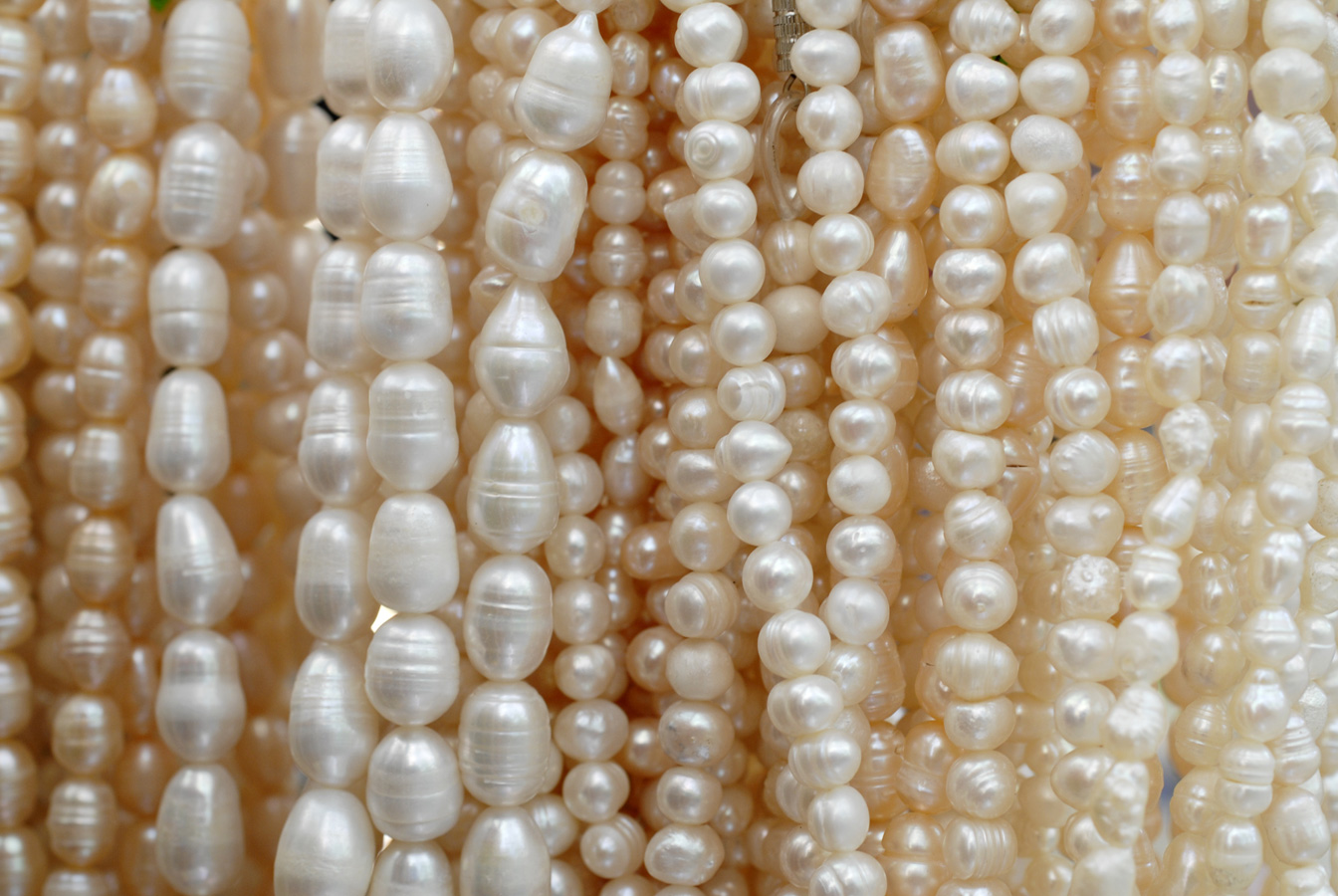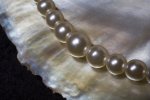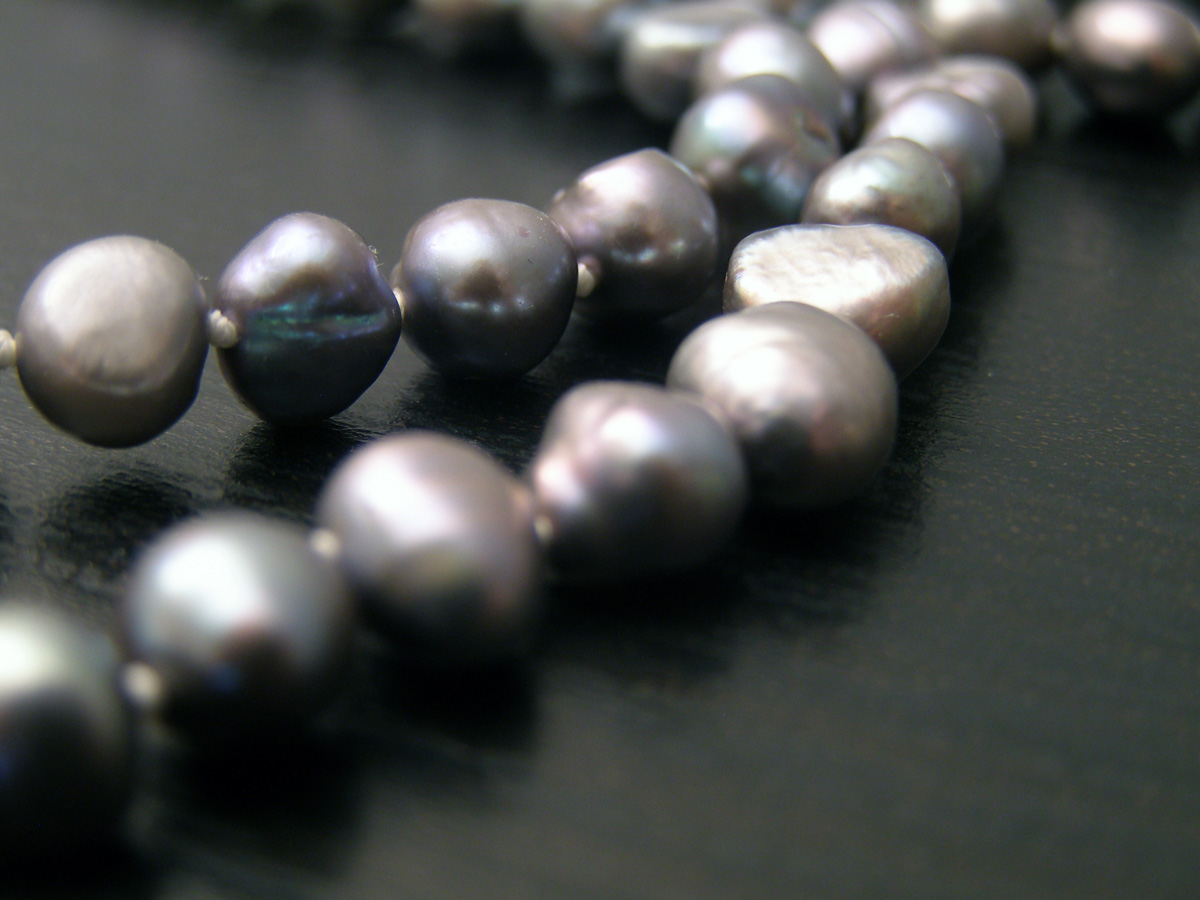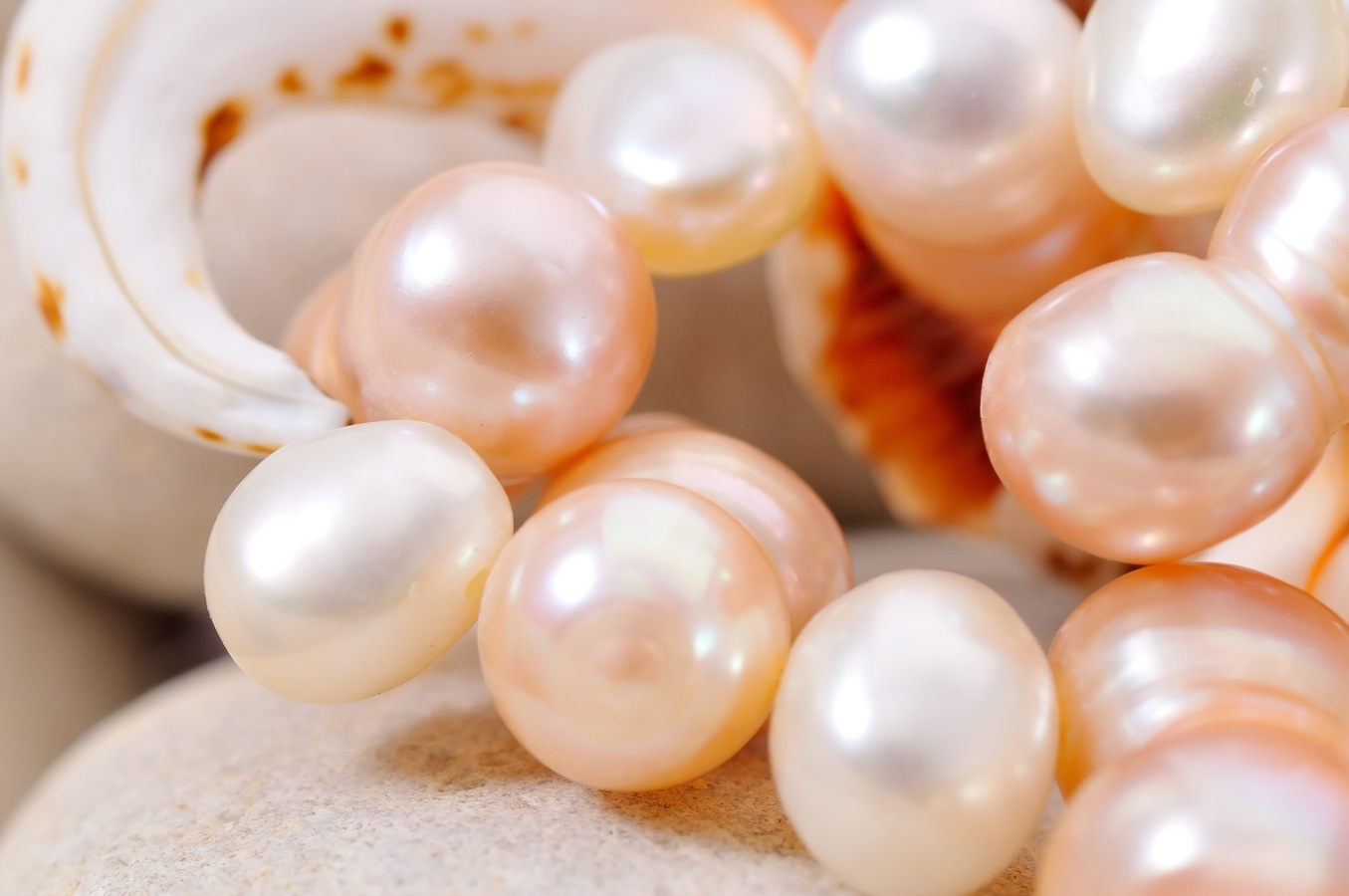Cultured pearls are nacreous formations secreted in the interior of productive molluscs. The secretion is started by human intervention and the rest of the process is performed by the molluscs themselves.
Cultured pearls were first licensed in A.D.1907. The names of Mise, Nishikawa and Mikimoto are almost always linked with the history of cultured pearl production. Pearl culturing these days is a highly organized, commercial enterprise which is very quality conscious.
How are cultured pearls made?
Pearl culturing requires the following criteria to be fulfilled to obtain a good yield and quality.
- Pearl Farm: Factors to be considered are:
- Temperature of the water should be fairly constant, with little fluctuations.
- The salinity and the mineral salts must be considered.
- The type of sea-bed, whether rocky or sandy, and its accessibility.
- The presence of mild currents is important as they provide the food and oxygen to the oysters.
- The farming region should be protected from natural climatic hazards.
- Oyster preparation and requirements:
- The oysters are starved for several days to ensure that they can be opened much more easily, their gonads emptied and that the risk of rejection of the nucleus is reduced.
- Cores which are used as the nucleus are made from the shells of freshwater mussels (mainly those from the Mississippi). Their specific gravity is similar to that of a pearl and they have a neutral white colour. The shell is cut into thin sheets, then cubes, which are rounded in a tumbler. Diameters can vary as per the demand.
- Grafts: A graft is a small piece of the mantle which contains the cells producing the mother-of-pearl or nacre. This is inserted along with the nucleus and is responsible for the formation of the pearl. A strip is cut from the edge of the mantle and is carefully cleaned. The size of each graft should be such that it covers about one third of the core. A graft can live for about two hours in contact with seawater and should be utilized almost immediately.
- Operating Theatre: Since the entire process is similar to a major operation, care should be taken to maintain hygienic conditions and well trained staff so as to control and prevent the death of oysters.
- Culturing Process: This involves the following stages and can vary slightly for the production of round pearls and mabe pearls.
- The oyster is carefully opened with a sharp knife and held open by placing a wooden chock between the shells.
- The gonad or the reproductive system is the organ in which the implant of the graft and core is best tolerated by the oyster and produces the best results. This produces round pearls.
- The graft and the core are inserted into the gonads to the required position.
- Mabe pearls are produced by inserting a dome – shaped nucleus of mother of pearl, between the mantle and the shell of the oyster.
- During a single operation, two cores can be implanted at the same time.
- The oysters are then returned to the sea for a period of two to three years or until sufficient nacreous coatings have been deposited.
- The pearl is then extracted from the pearl sac. In some cases, another core is inserted and the oyster returned to the sea.
- In the case of mabe pearls, it is cut from the shell, cleaned and the hollow hemisphere is filled with a polyester resin and then closed with a mother of pearl backing.
- Harvesting is done during the winter season when the layers deposited are finer and with a better lustre. Once the harvest is over the pearls are processed to remove any organic impurities. The pearls are slightly bleached, which on drying gives a whiter appearance without the green tinge that freshly collected pearls always have.
- The pearls are now sortedon the basis of shape, colour, orient and size.
- Shape plays a major role in determining the price of pearls. Pearls can be generally considered under the following categories:
- Round
- Seed pearls (very small rounds)
- Slightly flattened round
- Baroque (irregular, pear shaped etc.)
- Colour is defined by the body colour, overtone and orient, e.g. a white body colour with a pink overtone known as rose, or a silvery or white overtone, a natural black or steel gray body colour with good orient is fairly highly priced.
- Orient should be judged using a standard daylight lamp against a dead white background.
- Size is measured in terms of weight and diameter, e.g.
- 1 carat = 4 pearl grains
- 1 momme = 18.75 carats
- Drilling of pearls: A pearl may be half drilled or completely drilled as per the requirement. Drilling is commonly done using a hand drill.
- Shape plays a major role in determining the price of pearls. Pearls can be generally considered under the following categories:
Types of Cultured Pearls
In trading circles a number of different terms are used to define pearls from specific locations or those of a particular type. The following are a few of the terms.
- Akoya Pearl: Saltwater pearls from the Akoya Oyster (pinctada fucata martensii). These are usually cultured, round, and their natural colours are pink, white, and yellowish.
- South Sea Pearls: This refers to large white pearls cultured in the pinctada maxima oyster – a large oyster found in the South Seas. There are two types of oyster called the silver-lip or gold-lip depending on the colour of the lip of the shell. Commonly found in the salt water area extending from Myanmar and Indonesia, down to Australia and across to French Polynesia.
- Black Pearl: These are grey to black coloured cultured pearls. Cultivated in the South Pacific from the black-lip oyster, pinctada margaritifera. The colour is an inherent characteristic of the pearl nacre. These are naturally black and not those that have been dyed.
- Biwa Pearl: These are freshwater cultured pearls cultivated in Lake Biwa, Japan’s largest lake. Nucleated and non-nucleated pearls are cultured here.
- Mabe Pearl: In the manufacture of a mabe a half-bead, dome-shaped nucleus (often of plastic or soap stone) is stuck on the inner surface of the shell. Once the nacre is secreted over the bead, the blister pearl is cleaned to prevent deterioration. The hollow shaped base is then filled with a paste, wax or resin and covered with a mother-of-pearl backing. The term blister mabe is also used.
- Mikimoto Pearl: Pearls produced and marketed by the Mikimoto Co. They are known for having a higher lustre and fewer flaws than the average Akoya pearl.
- Half Pearl: A whole pearl that has been ground or sawed on one side, usually to remove blemishes. If about 3/4 of the pearl remains it is called a half pearl. The term half pearl is also used to refer to blister pearls.
- Blister Pearl: Natural or cultured pearls that grow attached to the inner surface of the oyster or mussel shell, and when cut from the shell, one side is left flat with no pearly coating.
- Keshi Pearl: Naturally occurring very small, round / baroque, non-nucleated pearls, which form accidentally as a by – product during pearl formation (natural or cultured). Keshi is the Japanese word for poppy seed.































Leave a Reply
You must be logged in to post a comment.